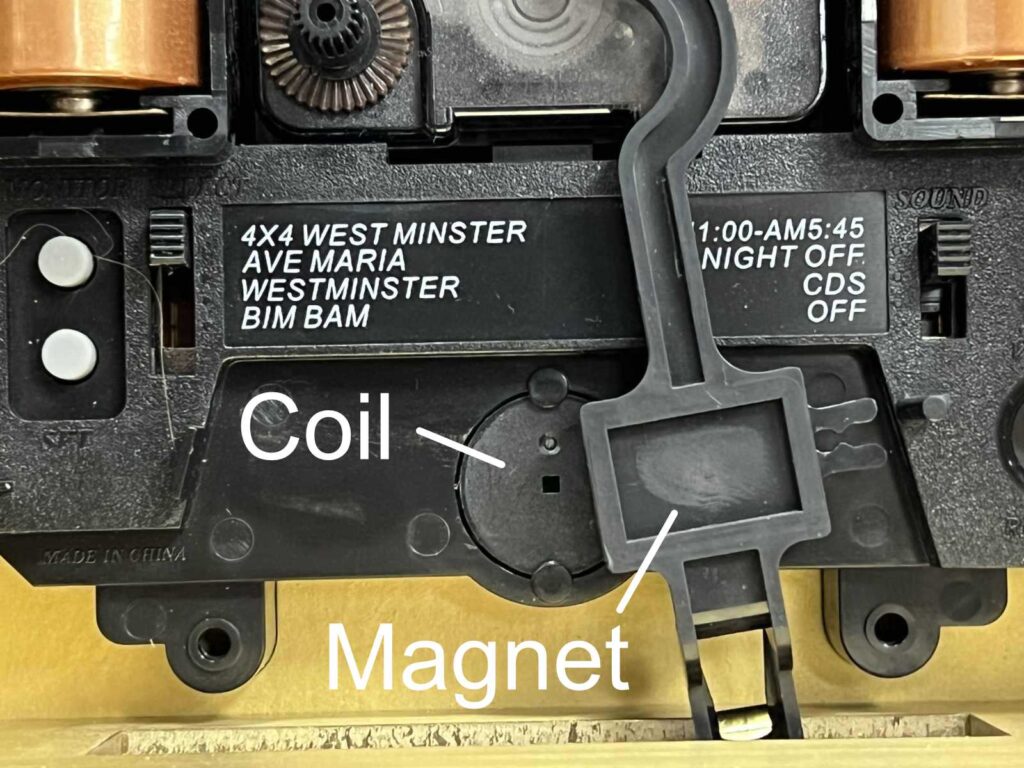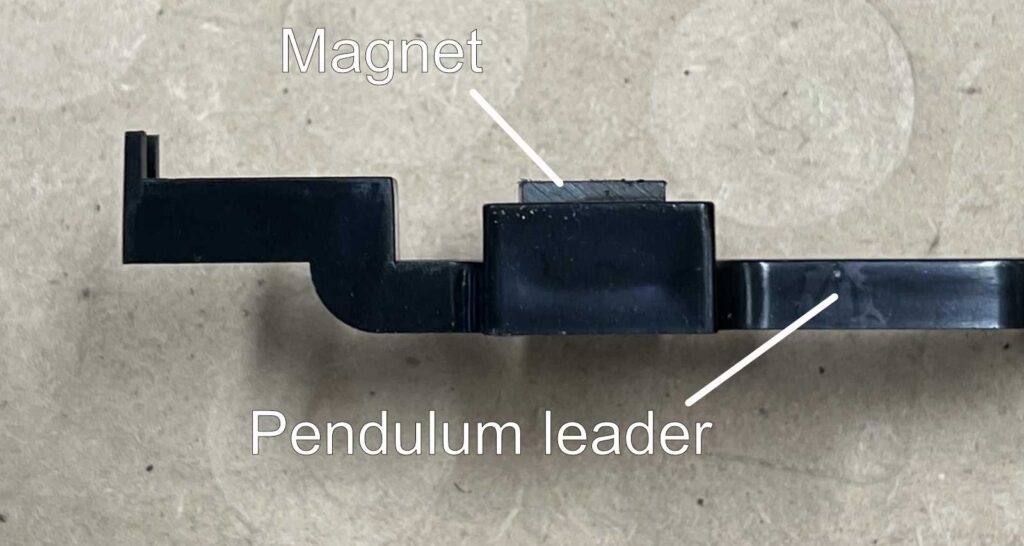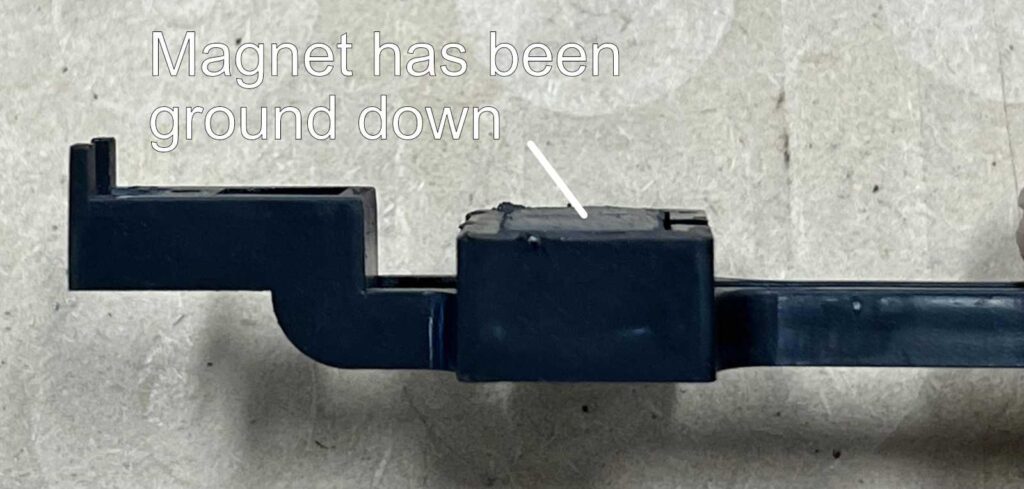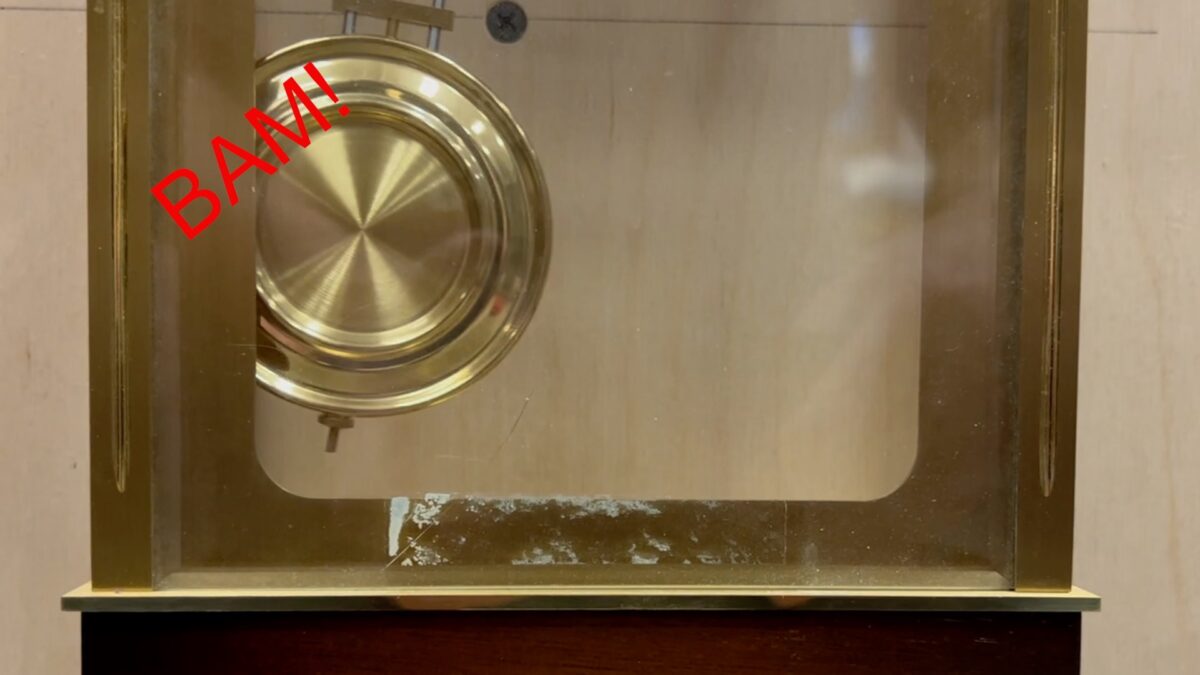Replacing a quartz movement normally isn’t too challenging – remove the hands, unscrew the old movement, reverse the process, and Bob’s your uncle. Sometimes there’s a snag – some movements have overpowered pendulum mechanisms, causing the pendulum to clunk against the sides of the clock case.
The intuitive reaction to this behavior is to try to add weight to the pendulum. This does eventually work to a degree, however it takes a surprising amount of weight to reduce the pendulum amplitude, and often it’s difficult to hide the extra weight. There is a better way!
Quartz Pendulum Function
Quartz movements impulse the pendulum by using the interaction between a permanent magnet in the pendulum leader and a coil of wire in the back of the movement. You can often see the location of the coil – a circular plastic plug at the bottom center of the movement.

A pulse of electricity is put across the coil, which briefly attracts the magnet. When the pulse is over, gravity pulls the pendulum back towards center, and another pulse to the coil impulses the pendulum in the opposite direction. The strength of the impulse depends on the amount of electricity sent to the coil and the strength of the permanent magnet on the pendulum leader.
Much like an escapement on a mechanical clock, this is a surprisingly efficient system, and you can get a lot of swing for a long time out of a battery. In a mechanical clock, the maximum pendulum amplitude is limited by the geometry of the escapement to a safe amount. In a quartz movement, sometimes there can be too much of a good thing.
I mentioned that the size of the electric pulse and the strength of the permanent magnet determine the force on the pendulum and therefore the amplitude. If we want to reduce the pendulum amplitude, we need to make one or the other of those factors smaller. It is impractical to change the electrical properties of the movement, but with a little customization, we can change the magnetic properties of the pendulum leader.

Here is a high-quality electronic chime movement. The fulcrum for the pendulum is under the cover panel at the top rear of the movement. In this movement it is held on by two screws. In some movements, you have to carefully unclip the cap. After removing the cap, the pendulum leader can be removed.

You can see the large square magnets. To reduce the strength of the magnets, we can either move them farther away from the coil as the magnetic field falls off with increasing distance, or using a rotary tool with a grinding wheel, we can grind a layer of the magnet away, which will both increase the air gap between the magnet and coil as well as reduce the strength of the remaining magnet.

Here is the magnet after grinding. I removed about 25-30% of the thickness of the magnet. This change resulted in maybe a 30% reduction in pendulum swing. If you want, you can take a conservative layer off, reassemble the clock and test. If there is still too much amplitude, you can remove more material.
Will this affect the timekeeping of the clock? No – in a quartz clock, the pendulum is strictly decorative. This will not affect the timekeeping function of the clock at all.

3 replies on “Repair Trick – Reducing Quartz Pendulum Overswing”
Did you remove magnet ot grind in place
Either would work. I generally leave the magnet in the plastic bracket.
your info and presentation is extremely helpful and easy to comprehend. I’d an accomplished repairman with over 60+ years of experience and still learn everyday. Thanks for the great website and helpful info.